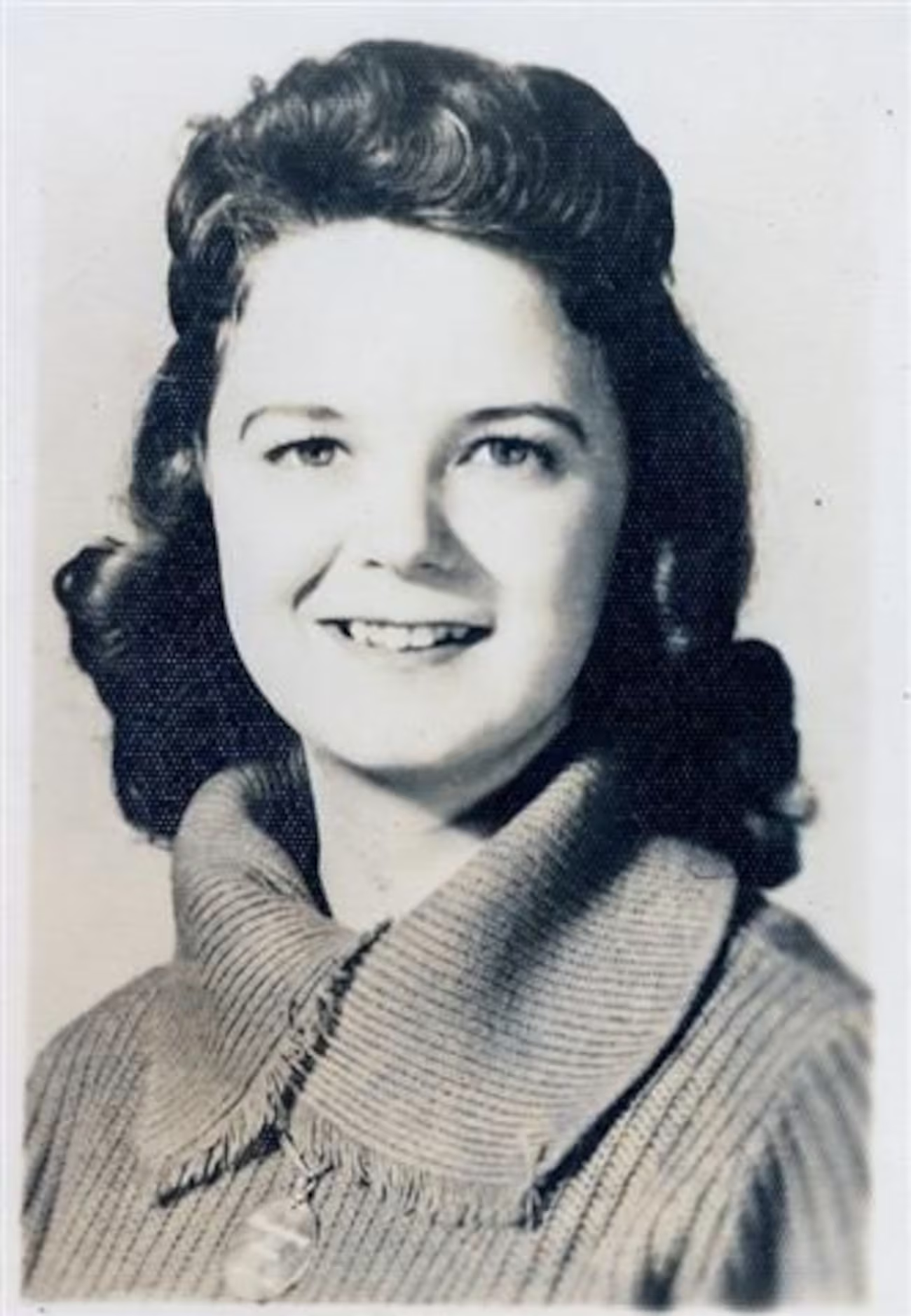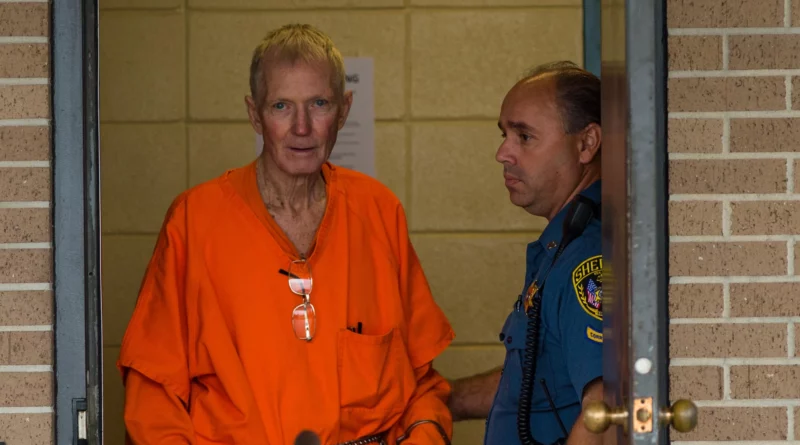The Chilling Case of Serial Killer William Felix Vail from Montpelier Mississippi
William Felix Vail, born on November 30, 1939, became infamous not only for his violent past but also for being at the center of one of the longest cold cases in U.S. history. Though initially eluding justice for decades, Vail was eventually convicted in 2016 for the 1962 death of his first wife, Mary Horton Vail. However, that case was only the beginning. Suspicion surrounds him for the disappearances of two other women: Sharon Hensley, his longtime girlfriend, and Annette Craver, his second wife. Together, these three cases form a chilling pattern of death, mystery, and manipulation, casting a dark shadow over Vail’s legacy.
Early Life and Background
William Felix Vail was raised in the southern United States, growing up on a dairy farm in Montpelier, Mississippi, during an era marked by conservative values and rigid social norms. Little is known about his early childhood beyond the fact that he came from a large, religious family. Vail’s upbringing instilled in him traditional notions of family and marriage, but as he grew older, cracks began to show in his personal relationships. Those who knew him described Vail as charming and charismatic, yet with a dark, controlling side that emerged in intimate settings.
From an early age, Vail had a turbulent relationship with authority and developed a reputation as someone who could be both magnetic and menacing. His relationships with women, in particular, were characterized by dominance and manipulation, elements that would later take on deadly consequences. His charm initially hid the dangers lurking beneath, but as history unfolded, Vail’s sinister tendencies came to light.
The Disappearance of Mary Horton Vail

Mary Horton Vail was William Felix Vail’s first wife, and her death marked the beginning of a decades-long legal and criminal saga. The two were married in 1962, but the union quickly ended in tragedy. On October 28 of that year, Vail took Mary on a boat ride in the Calcasieu River in Louisiana. According to Vail’s account, Mary drowned when she accidentally fell overboard, becoming tangled in some fishing equipment. At the time, the authorities accepted Vail’s version of events and ruled the death an accidental drowning.
However, there were glaring inconsistencies in Vail’s story. Mary’s family found it hard to believe she would simply fall from the boat, and they suspected foul play. Her body showed signs of trauma, including a large bruise on her neck, leading many to question whether her death was truly an accident. Despite the suspicious circumstances, no charges were filed against Vail, and the case went cold for decades.
Mary’s family never stopped pushing for justice, haunted by their belief that Vail had murdered her. It wasn’t until many years later that new evidence and renewed investigative interest reopened the case.
The Suspicious Death of Sharon Hensley

After Mary Horton Vail’s death, William Felix Vail’s life moved on, but death and disappearance seemed to follow him. His next known partner was Sharon Hensley, a free-spirited woman with whom Vail began a relationship in the early 1970s. Sharon’s relationship with Vail was volatile and controlling, with friends and family describing him as domineering and manipulative.
Sharon vanished in 1973 while in Key West, Florida, and once again, Vail had an explanation. He claimed she had decided to leave society and live a reclusive life, telling authorities that she boarded a bus bound for Mexico. However, no trace of Sharon was ever found, and her family never believed Vail’s story. They suspected that Sharon, like Mary before her, had fallen victim to Vail’s dark side.
The circumstances surrounding Sharon’s disappearance were eerily similar to Mary’s death. In both cases, Vail was the last person to see the women alive, and in both cases, he offered an implausible explanation that failed to satisfy her family and friends.
The Mystery of Annette Craver

Vail’s third high-profile relationship was with Annette Craver, a much younger woman whom he married in 1983. Annette was just 17 years old when she became involved with Vail, who was 44 at the time. Their relationship was troubling from the start, with many observing that Vail had a strange, almost predatory, hold over her. He controlled her finances and isolated her from her family, classic signs of coercive control.
In 1984, Annette disappeared in Denver, Colorado, with Vail once again offering a suspicious story. According to him, Annette had decided to leave her life behind and move to Mexico. Like Sharon Hensley before her, Annette’s fate remains unknown, and her family strongly suspected that she had been murdered by Vail. Despite the similarities to Mary and Sharon’s cases, authorities did not have enough evidence to pursue charges against Vail at the time.
The disappearance of Annette Craver reinforced the pattern of violence and control that had marked Vail’s relationships with women. The families of all three women were left with deep suspicion, grief, and frustration, unable to prove what they felt in their hearts—that Vail was responsible for these disappearances and deaths.
Patterns in Vail’s Relationships
One of the most disturbing aspects of William Felix Vail’s life was the clear pattern of control, manipulation, and ultimate disappearance that characterized his relationships with women. In each case—Mary, Sharon, and Annette—Vail had a significant hold over the women in his life. He isolated them from their families, controlled their finances, and exercised dominance over their daily lives.
This pattern of coercion and control is not uncommon in cases of intimate partner violence, where abusers use psychological tactics to dominate their partners. What sets Vail’s case apart is the tragic end that met each of the women who became involved with him. Their disappearances were too similar to ignore, and though it took decades for authorities to act, the pattern eventually became impossible to dismiss.
Vail’s ability to evade justice for so long is a testament to how manipulative and convincing he could be. He maintained a calm and composed demeanor, even under suspicion, which allowed him to avoid serious scrutiny from law enforcement for years.
The Decades-Long Search for Justice
For more than 50 years, the families of Mary, Sharon, and Annette fought tirelessly to uncover the truth about their loved ones’ fates. Despite repeated setbacks, their persistence kept the cases alive in the public consciousness. It was this determination that eventually led to a breakthrough.
In 2012, an investigative journalist took a fresh look at Mary Horton Vail’s death, uncovering new evidence that contradicted Vail’s original account. Armed with this new information, authorities reopened the case, and in 2013, William Felix Vail was arrested and charged with Mary’s murder. At trial, forensic experts testified that Mary’s death had not been an accident, but rather a deliberate act of violence. The bruising on her neck indicated that she had been forcibly held underwater, leading to her death by drowning.
In 2016, Vail was found guilty of second-degree murder and sentenced to life in prison. Although he was never charged in connection with the disappearances of Sharon Hensley or Annette Craver, their cases remain open, and many believe that Vail is responsible for their deaths as well.
Conclusion
William Felix Vail’s story is a chilling reminder of how easily dangerous individuals can slip through the cracks of the legal system, especially when their crimes span decades. For more than 50 years, Vail lived freely, while the families of his victims were left searching for answers. It was only through the tireless efforts of those families, along with the dedication of journalists and investigators, that justice was finally served.
Vail’s case is now recognized as one of the oldest serial killer convictions in U.S. history, a testament to the persistence of those seeking justice and the importance of reopening cold cases. Though his conviction for Mary Horton Vail’s murder brought some closure, the full truth behind the disappearances of Sharon Hensley and Annette Craver may never be known.
Discover more from City Towner
Subscribe to get the latest posts sent to your email.




